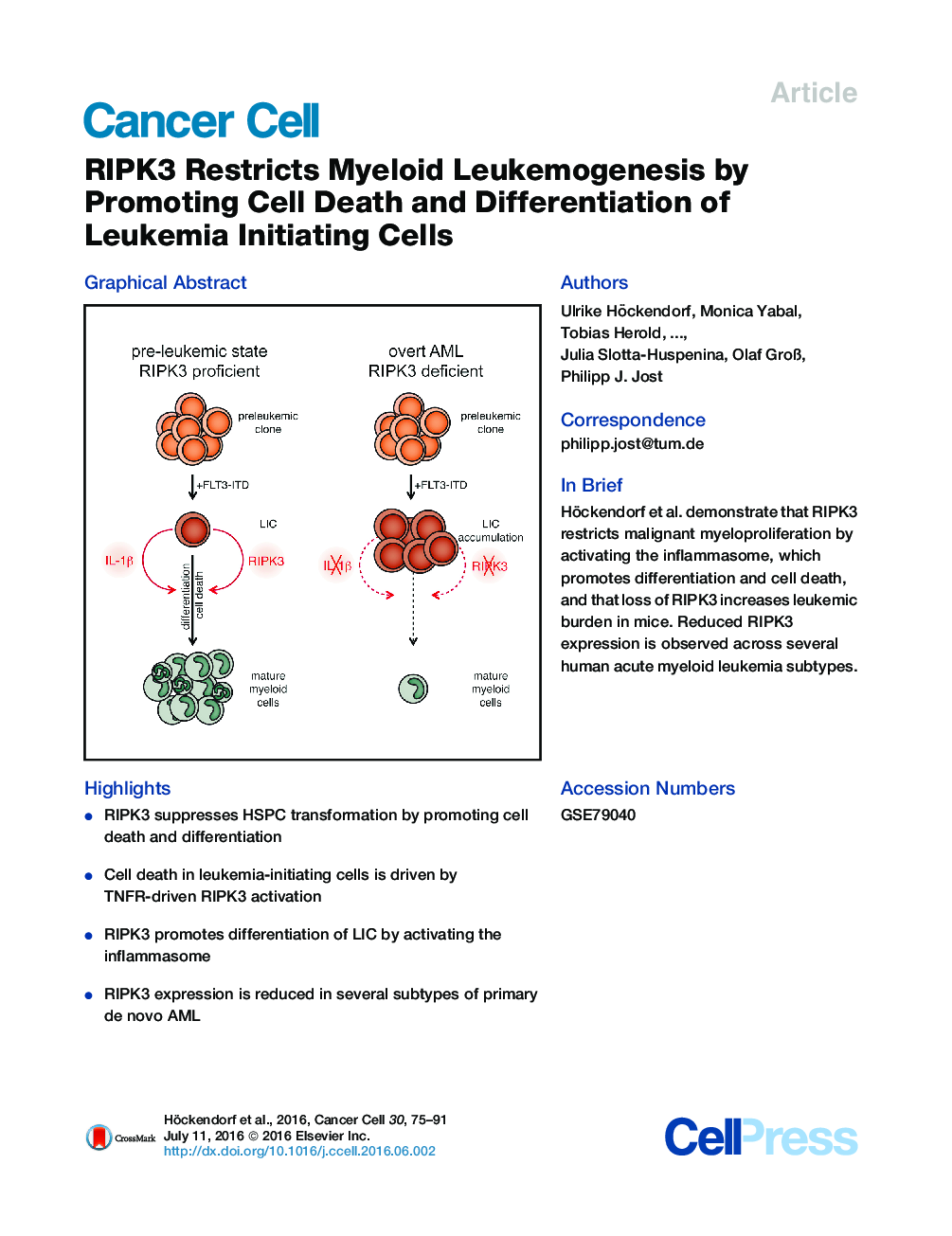| Article ID | Journal | Published Year | Pages | File Type |
|---|---|---|---|---|
| 2106706 | Cancer Cell | 2016 | 17 Pages |
•RIPK3 suppresses HSPC transformation by promoting cell death and differentiation•Cell death in leukemia-initiating cells is driven by TNFR-driven RIPK3 activation•RIPK3 promotes differentiation of LIC by activating the inflammasome•RIPK3 expression is reduced in several subtypes of primary de novo AML
SummarySince acute myeloid leukemia (AML) is characterized by the blockade of hematopoietic differentiation and cell death, we interrogated RIPK3 signaling in AML development. Genetic loss of Ripk3 converted murine FLT3-ITD-driven myeloproliferation into an overt AML by enhancing the accumulation of leukemia-initiating cells (LIC). Failed inflammasome activation and cell death mediated by tumor necrosis factor receptor caused this accumulation of LIC exemplified by accelerated leukemia onset in Il1r1−/−, Pycard–/–, and Tnfr1/2−/− mice. RIPK3 signaling was partly mediated by mixed lineage kinase domain-like. This link between suppression of RIPK3, failed interleukin-1β release, and blocked cell death was supported by significantly reduced RIPK3 in primary AML patient cohorts. Our data identify RIPK3 and the inflammasome as key tumor suppressors in AML.
Graphical AbstractFigure optionsDownload full-size imageDownload high-quality image (189 K)Download as PowerPoint slide
